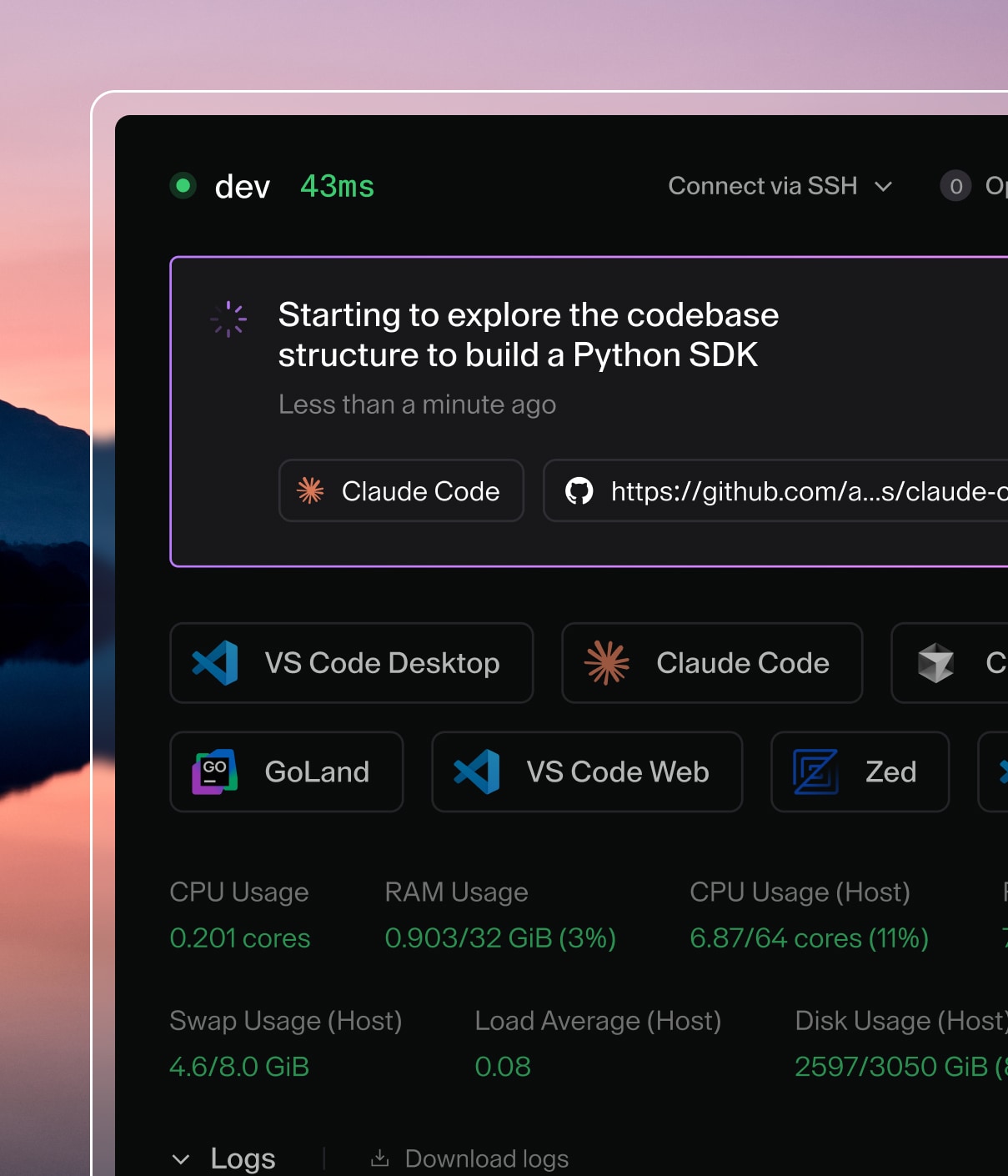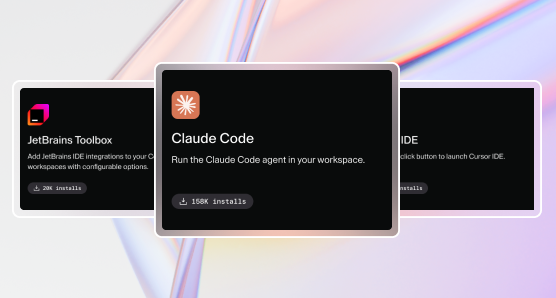Coder Desktop Connect and Sync
Use Coder Desktop to work on your workspaces and files as though they're on your LAN.
Note
Coder Desktop requires a Coder deployment running v2.20.0 or later.
Coder Connect
While active, Coder Connect will list the workspaces you own and will configure your system to connect to them over private IPv6 addresses and custom hostnames ending in .coder.

To copy the .coder hostname of a workspace agent, select the copy icon beside it.
You can also connect to the SSH server in your workspace using any SSH client, such as OpenSSH or PuTTY:
ssh your-workspace.coder
Any services listening on ports in your workspace will be available on the same hostname. For example, you can access a web server on port 8080 by visiting http://your-workspace.coder:8080 in your browser.
Note
For Coder versions v2.21.3 and earlier: the Coder IDE extensions for VSCode and JetBrains create their own tunnel and do not utilize the Coder Connect tunnel to connect to workspaces.
Ping your workspace
Use ping6 in your terminal to verify the connection to your workspace:
ping6 -c 5 your-workspace.coder
Sync a local directory with your workspace
Coder Desktop file sync provides bidirectional synchronization between a local directory and your workspace. You can work offline, add screenshots to documentation, or use local development tools while keeping your files in sync with your workspace.
-
Create a new local directory.
If you select an existing clone of your repository, Desktop will recognize it as conflicting files.
-
In the Coder Desktop app, select File sync.

-
Select the + in the corner to select the local path, workspace, and remote path, then select Add:

-
File sync clones your workspace directory to your local directory, then watches for changes:

For more information about the current status, hover your mouse over the status.
File sync excludes version control system directories like .git/ from synchronization, so keep your Git-cloned repository wherever you run Git commands.
This means that if you use an IDE with a built-in terminal to edit files on your remote workspace, that should be the Git clone and your local directory should be for file syncs.
Note
Coder Desktop uses alpha and beta to distinguish between the:
- Local directory:
alpha - Remote directory:
beta
File sync conflicts
File sync shows a Conflicts status when it detects conflicting files.
You can hover your mouse over the status for the list of conflicts:

If you encounter a synchronization conflict, delete the conflicting file that contains changes you don't want to keep.
Troubleshooting
Accessing web apps in a secure browser context
Some web applications require a secure context to function correctly.
A browser typically considers an origin secure if the connection is to localhost, or over HTTPS.
Because Coder Connect uses its own hostnames and does not provide TLS to the browser, Google Chrome and Firefox will not allow any web APIs that require a secure context.
Even though the browser displays a warning about an insecure connection without HTTPS, the underlying tunnel is encrypted with WireGuard in the same fashion as other Coder workspace connections (e.g. coder port-forward).
If you require secure context web APIs, identify the workspace hostnames as secure in your browser settings.
-
Open Chrome and visit
chrome://flags/#unsafely-treat-insecure-origin-as-secure. -
Enter the full workspace hostname, including the
httpscheme and the port (e.g.http://your-workspace.coder:8080), into the Insecure origins treated as secure text field.If you need to enter multiple URLs, use a comma to separate them.

-
Ensure that the dropdown to the right of the text field is set to Enabled.
-
You will be prompted to relaunch Google Chrome at the bottom of the page. Select Relaunch to restart Google Chrome.
-
On relaunch and subsequent launches, Google Chrome will show a banner stating "You are using an unsupported command-line flag". This banner can be safely dismissed.
-
Web apps accessed on the configured hostnames and ports will now function correctly in a secure context.
We are planning some changes to Coder Desktop that will make accessing secure context web apps easier in future versions.


